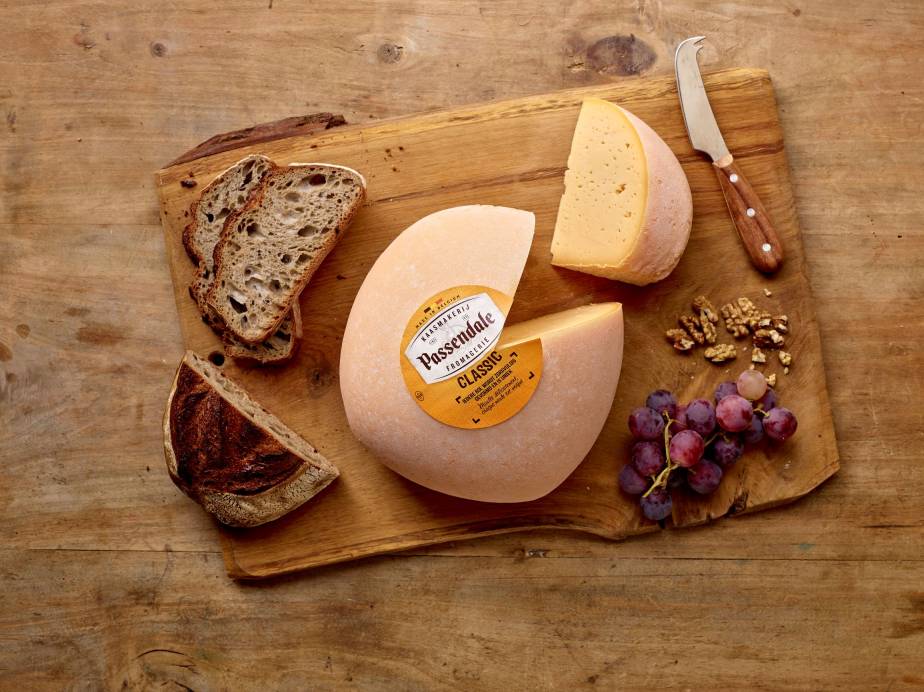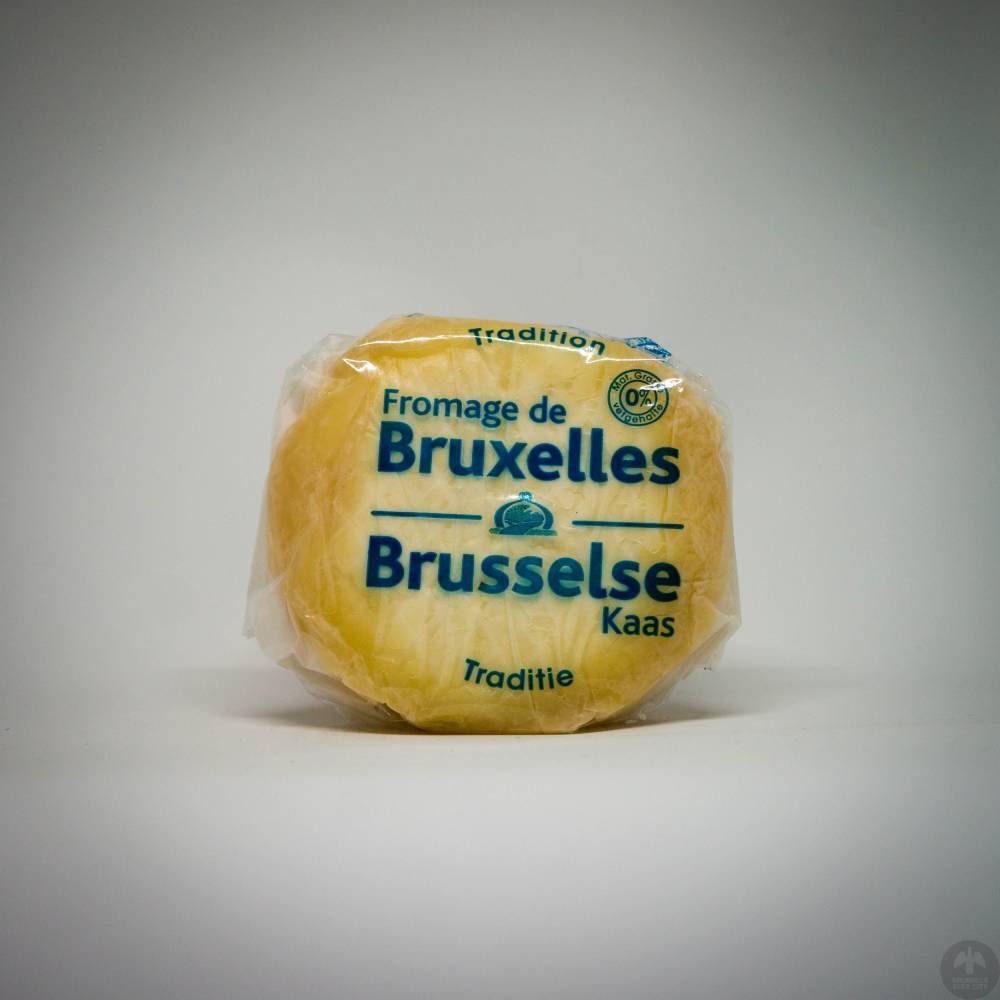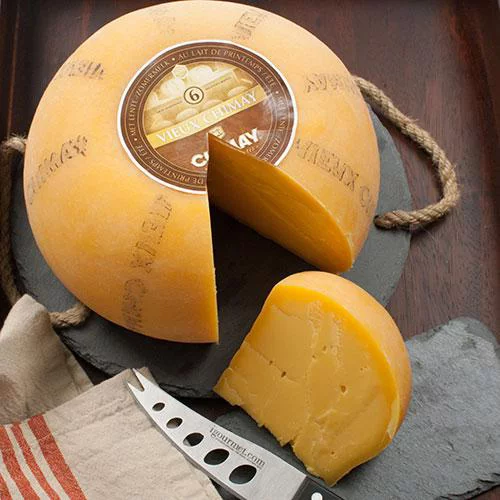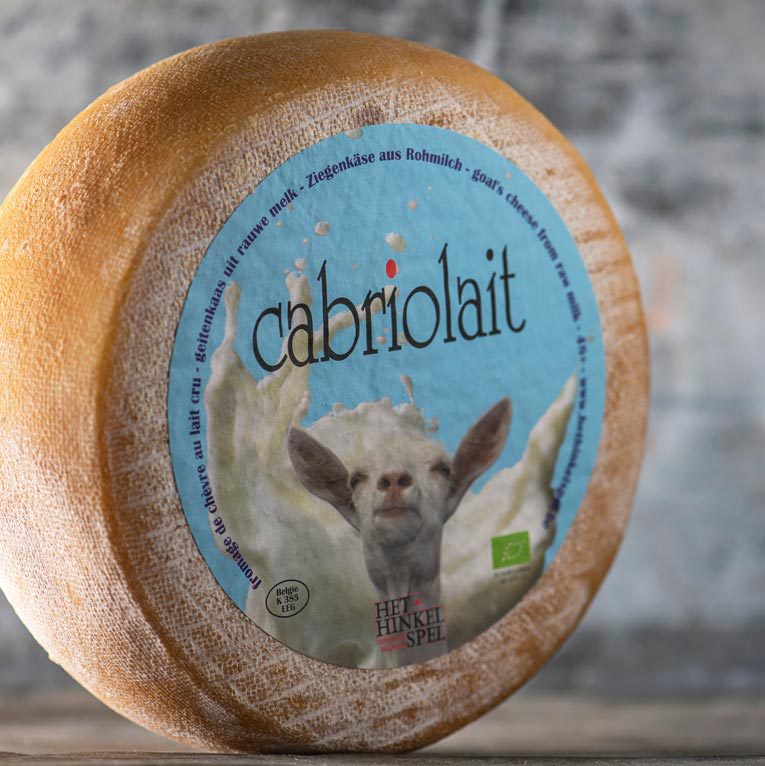8 Most Popular Cheeses Originated in Belgium

Belgium, a country renowned for its rich beer and chocolate traditions, also boasts a lesser-known but equally delectable culinary gem – its cheese. With a cheesemaking history that dates back to the Roman era, Belgium offers a wide array of cheeses that are as diverse as they are delicious.
In this post, we will take you on a gastronomic journey through the aromatic, creamy, and sometimes pungent world of Belgian cheese. We’ll explore the top 8 most popular Belgian cheeses, each with its unique character, texture, and taste.
From the strong and spicy Limburger to the mild and nutty Cabriolait, there’s a Belgian cheese to tantalize every palate.
The 8 Most Popular Belgian Cheeses (BEST)
| Cheese | Description | Taste | Type |
|---|---|---|---|
| Limburger | Known for its strong smell, Limburger is a soft cheese that originated in Belgium. It has a creamy texture and a brownish rind. | It has an intense flavor, often described as earthy, tangy and slightly sweet. | Washed-rind Cheese |
| Fromage de Herve | This is a traditional Belgian cheese made from cow’s milk. It’s named after the town of Herve, where it was first produced. | It offers a robust and slightly spicy flavor with a hint of sweetness. | Soft Cheese |
| Passendale | Passendale is a classic Belgian cheese, known for its round shape and creamy texture. It is often used in sandwiches and salads. | The taste is mild and creamy, somewhat similar to a young Gouda. | Semi-hard Cheese |
| Fromage de Maredsous | Produced in the Maredsous Abbey, this cheese is traditionally washed in beer during maturation. | It has a rich, creamy, and slightly spicy flavor. | Semi-soft Cheese |
| Brusselse Kaas | Also known as Maasdam, this cheese is characterized by its large holes and nutty flavor. | The taste is sweet and nutty with a hint of fruitiness. | Semi-hard Cheese |
| Vieux Chimay | Made in Scourmont Abbey, this cheese is often washed with Chimay beer, giving it a unique flavor. | It has a complex flavor, combining the richness of cheese with a slight bitterness from the beer. | Semi-hard Cheese |
| Achelse Blauwe (Grevenbroecker) | Achelse Blauwe is a blue cheese that is produced in the Achel Trappist Brewery. It’s also known as Grevenbroecker. | It offers a rich, creamy taste with a distinct sharpness typical of blue cheeses. | Blue Cheese |
| Cabriolait | A Belgian goat cheese, Cabriolait is known for its white color and creamy texture. | It has a mild flavor with a slight tanginess typical of goat cheeses. | Soft Cheese |
1. Limburger

- Milk Type: Cow’s milk
- Taste: Strong, pungent, spicy
- Texture: Soft and creamy
- Food pairing: Rye bread and onions
- Wine Pairing: A strong red wine like Cabernet Sauvignon
- Read in-depth guide
Originating from the historic Duchy of Limburg, an area that straddles modern-day Belgium, Germany, and the Netherlands, Limburger is a cheese that stands out in the crowd. Famous (or perhaps infamous) for its strong, distinctive aroma, Limburger is often compared to the scent of aged, sweaty feet. But don’t let this deter you – once you get past the initial ‘smelly sock’ encounter, you’re rewarded with a culinary experience like no other.
The cheese itself is a soft, washed-rind variety with a thin, brownish rind and a creamy, pale yellow interior. The production process involves washing the cheese in a solution of bacteria, which not only gives Limburger its unique smell but also its delightfully complex flavor profile. It’s characterized by an earthy, tangy taste with a hint of sweetness that becomes more pronounced as the cheese matures.
Limburger’s creamy texture and intense flavor make it an excellent choice for hearty sandwiches or as an accompaniment to robust Belgian beers. Despite its notorious reputation, Limburger has a dedicated following of cheese lovers who appreciate its bold, unforgettable character. It’s a testament to the saying ‘don’t judge a book (or in this case, a cheese) by its cover’ – or smell!
2. Fromage de Herve

- Milk Type: Cow’s milk
- Taste: Tangy, salty, slightly sweet
- Texture: Soft and creamy
- Food pairing: Local Belgian beer or in a traditional dish called “Herve à la bière”
- Wine Pairing: Full-bodied red wines like Merlot or Pinot Noir
- Read in-depth guide
Fromage de Herve is a traditional Belgian cheese with a rich history that dates back to the early 1400s. Named after Herve, the principal town of the Pays de Herve region situated in the territory of Entre-Vesdre-et-Meuse, this cheese has been savored by enthusiasts since the Middle Ages.
Often characterized by its square shape, warm brick color, and distinctive aroma, Fromage de Herve is a soft, washed-rind cheese made from either raw or pasteurized cow’s milk. The cheese has a unique personality – it’s bold, with an intense flavor that is felt even before you take your first bite. It’s typically presented in a cubical form, boasting a soft paste and a washed crust, a result of a meticulous and traditional production process.
This cheese is quite versatile, making it a perfect addition to various culinary creations. Whether enjoyed on its own, paired with a robust beer, or incorporated into gourmet recipes, Fromage de Herve offers a remarkable taste experience that reflects the rich heritage of Belgian cheesemaking.
3. Passendale

- Milk Type: Cow’s milk
- Taste: Mild, slightly sweet and nutty
- Texture: Semi-hard with small holes
- Food pairing: Bread, fruits, or in salads
- Wine Pairing: Light red wines like Beaujolais or white wines like Chardonnay
- Read in-depth guide
Passendale cheese, named after the Belgian village where it originated, is a semi-soft, creamery cheese made from cow’s milk. This cheese is easily recognizable by its unique loaf-of-bread-like shape and hard, edible brown rind, lightly dusted with spots of white. On the inside, you’ll find a golden, dotted flesh that adds to its visual appeal.
Passendale’s origin story is as interesting as its taste – it was developed by a couple who had to flee to Normandy during the First World War. There, they learned the intricate process of cheese-making which led to the birth of this delightful cheese.
In terms of flavor, Passendale strikes a delicate balance between a mild yet slightly tangy profile. It has also been described as having a fruity taste, particularly in certain varieties. Whether enjoyed in slices or as part of a gourmet cheese platter, Passendale offers a unique taste of Belgian tradition that can be savored by cheese lovers worldwide.
4. Fromage de Maredsous

- Milk Type: Cow’s milk
- Taste: Nutty, mild
- Texture: Semi-soft
- Food pairing: Bread or used in cooking for dishes like gratins
- Wine Pairing: White wines like Sauvignon Blanc or light red wines like Pinot Noir
- Read in-depth guide
Fromage de Maredsous is a semi-hard cheese with an orange rind, renowned for its Belgian origins and the unique process of its creation. This cheese has been produced since the early 1950s in the Abbey of Maredsous, one of the few places left that still matures cheese in abbey cellars.
The maturation process, which takes place at a temperature of 12°C with a specific humidity level, lends the cheese its creamy texture and distinctive taste.
The flavor of Fromage de Maredsous is described as mild yet rich, embodying a smooth and creamy essence, which makes it a delightful addition to any cheese platter.
Interestingly, the monks at Maredsous Abbey revived traditional methods of cheesemaking in 1952 to create this delightful product, complementing their famous Maredsous blonde beer. Whether shared among family, friends, or enjoyed solo, Fromage de Maredsous is a testament to the time-honored traditions of Belgian cheesemaking.
5. Brusselse Kaas

- Milk Type: Cow’s milk
- Taste: Mild, slightly sour
- Texture: Semi-soft
- Food pairing: Bread or melted into sauces
- Wine Pairing: Crisp white wines like Pinot Grigio or light red wines like Gamay
- Read in-depth guide
Brusselse Kaas, also known as Brussels cheese, is a traditional Belgian cheese that traces its roots back to the city of Brussels. This cheese is made from pasteurized cow’s milk, and it’s distinguished by its rectangular shape, bright white color, and smooth, creamy texture.
The taste of Brusselse Kaas has been described as mild, slightly sour, and fresh, making it a versatile choice that pairs well with a variety of foods. It’s typically served in thin slices, perfect for sandwiches or as an addition to a cheese platter. The flavor profile of Brusselse Kaas is enhanced when it’s paired with a light, crisp beer or a glass of white wine.
One unique aspect of this cheese is its lower fat content compared to many other cheeses, making it a healthier alternative for cheese lovers. Whether you’re looking for a light snack, a sandwich filler, or an addition to your cheese board, Brusselse Kaas offers a delightful taste of Belgium’s rich cheese-making tradition.
6. Vieux Chimay

- Milk Type: Cow’s milk
- Taste: Nutty, fruity, slightly bitter
- Texture: Semi-hard
- Food pairing: Bread or can be grated over dishes
- Wine Pairing: Full-bodied red wines like Malbec or Syrah
Vieux Chimay is a traditional Belgian cheese that traces its roots back to the Chimay region. This hard cheese, produced from cow’s milk and annatto, is uniquely shaped into a flattened ball and allowed to age for at least six months, though some variants are matured for up to 18 months. The creation of Vieux Chimay dates back to 1989, making it a relatively recent addition to the world of cheese.
Its striking orange color and creamy interior bear a resemblance to Mimolette, another celebrated cheese. Notably, the milk used in the production of Vieux Chimay is collected solely during the summer months, contributing to its unique flavor profile. The taste of this cheese is complex and rich, described as fruity and firm with hints of mushrooms, apples, stone fruits, nuts, and hop. Whether savored on its own or paired with a fine Belgian beer, Vieux Chimay offers an unforgettable taste experience that reflects the character and tradition of Chimay’s cheese-making heritage.
7. Achelse Blauwe (Grevenbroecker)

- Milk Type: Cow’s milk
- Taste: Sweet and spicy, with hints of grass, nuts, and earthy undertones
- Texture: Creamy, crumbly
- Food pairing: Pairs well with a variety of wines and beers
- Wine Pairing: Sweet white wines like Sauternes or full-bodied red wines like Cabernet Sauvignon
Achelse Blauwe, also known as Grevenbroecker, is a unique Belgian blue cheese that originates from the region of Limburg. This artisanal cheese, produced by Catharinadal cheese farm, stands apart due to its distinctive production process. Unlike most blue cheeses that have Penicillium cultures introduced into them, Achelse Blauwe undergoes a natural process where the cheese is pierced, allowing air to enter and promote the growth of blue mold.
The cheese is made from raw cow’s milk and is aged for at least three months. The result is a creamy, crumbly texture with a milder, more nuanced flavor compared to other blue cheeses. It offers a delicate balance of sweet and spicy notes, with hints of grass, nuts, and earthy undertones.
Achelse Blauwe is encased in a unique gray rind, adding to its rustic charm. Its complex flavor profile makes it an excellent companion to a variety of wines and beers, particularly those that can complement its sweet-spicy notes. Achelse Blauwe represents a perfect fusion of tradition and innovation, offering a gourmet cheese experience that is both distinctive and memorable.
8. Cabriolait

- Milk Type: Goat’s milk
- Taste: Mild, nutty, tangy, slightly sweet
- Texture: Supple and smooth
- Food pairing: Crusty bread, or used in cooking for dishes that require a melting cheese
- Wine Pairing: Light white wines like Sauvignon Blanc or light red wines like Beaujolais
Cabriolait is a delightful Belgian goat cheese, hailing from the Wallonia region. This artisanal cheese is made from pasteurized goat’s milk, offering a mild and creamy flavor profile that is accessible even to those who are not typically fond of goat cheeses. The cheese undergoes a ripening process of about two weeks, during which it develops a soft, edible white rind that adds a subtle tangy note to its overall flavor.
The interior of Cabriolait is supple and smooth, with a bright white color that is characteristic of goat’s milk cheese. Its flavor is gentle yet rich, with a pleasing balance of nutty, tangy, and slightly sweet notes. The creamy texture and mild flavor make Cabriolait extremely versatile – it can be enjoyed on its own, spread on crusty bread, or used in cooking, particularly in dishes that call for a cheese that can melt well.
As an artisanal product, Cabriolait exemplifies the careful craftsmanship and rich dairy traditions of the Wallonia region. Its balanced flavor and creamy texture make it a crowd-pleaser, perfect for those exploring the world of goat cheeses.
Final Thoughts
As we wrap up our delectable journey through the world of Belgian cheese, it’s clear that this small country offers an impressive array of flavors and textures for every cheese enthusiast.
We’ve explored the bold Limburger, the tangy Fromage de Herve, the mild Passendale, the nutty Fromage de Maredsous, the slightly sour Brusselse Kaas, the fruity Vieux Chimay, the sweet and spicy Achelse Blauwe, and the supple Cabriolait.
Each cheese tells a story of tradition, craftsmanship, and regional flavor that is unique to Belgium. So, the next time you’re looking to elevate your cheese board, consider adding a slice or two from Belgium’s finest offerings.
Whether paired with a well-chosen wine or savored on its own, Belgian cheese promises a culinary experience that will delight your taste buds and introduce you to a new world of flavors. Bon appétit!
Also read:
- 9 Most Popular Cheeses Originated in India
- 10 Most Popular Cheeses Originated in Greece
- 10 Most Popular Cheeses Originated in Germany
- Top 10 Most Popular France Cheeses
- Top 10 Most Popular England Cheeses
- 40 Different Types of Cheese: Most Popular Cheeses Around The Globe
- Top 10 Most Popular Cyprus Cheeses





